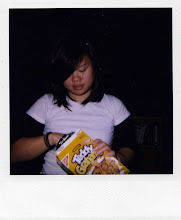I was interested in photographing the process of things. I wanted to look at motion and the way the body moves when in motion. I also wanted to look at this from different vantage points. At first, I was obsessed with the idea of voyeurism, and shooting it accordingly. But, as I was photographing, I realised that there were photographs that just didn't make sense for a voyeur to look at. So, I then focused more on the action rather than making it look creepy. This project really pushed me to look at things differently, to think before I shoot and to understand which vantage point works best. Before I took each picture, I would think of the different angles and also shoot the same motions in different angles (if what the subject was doing allowed me to do so). I think if I were to continue with this project, I would focus more on the content. Perhaps I would split it into two - dissecting simple motions (i.e. walk, run, dance) and dissecting private moments.








